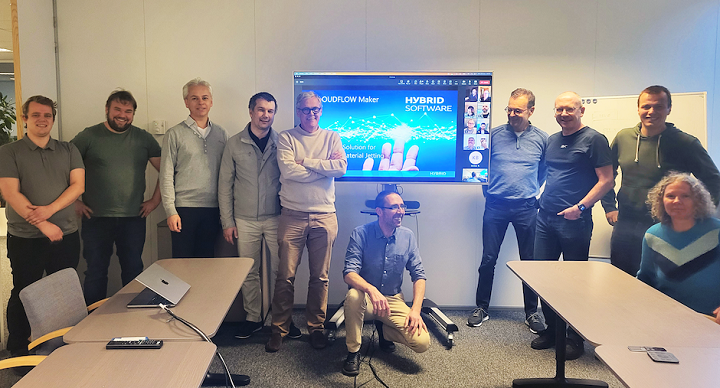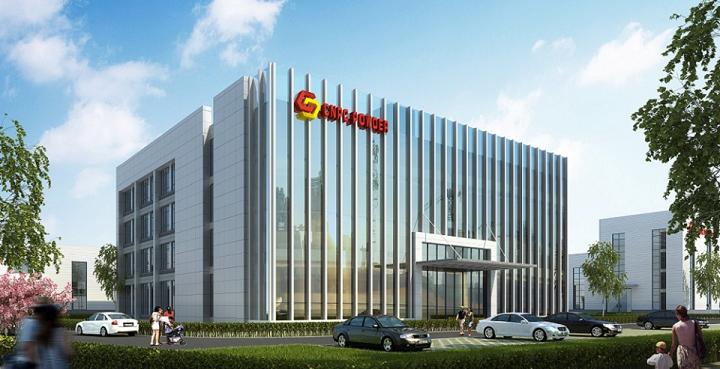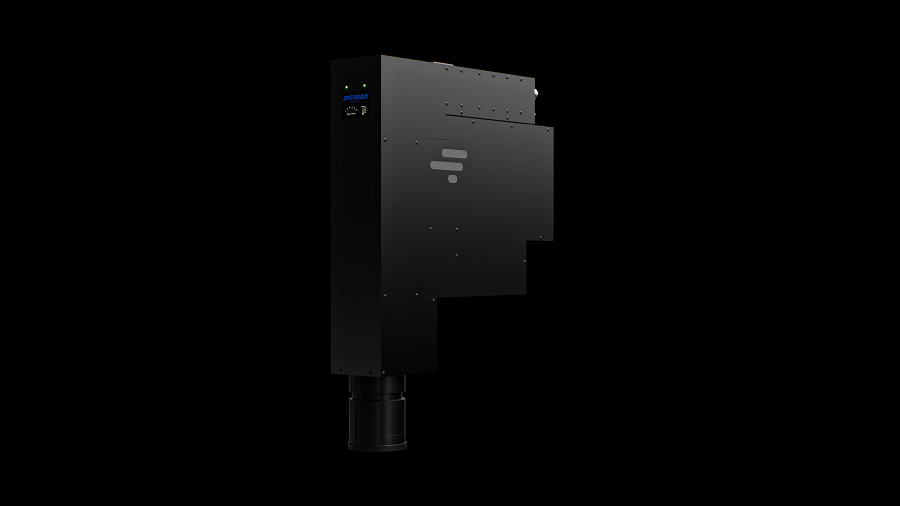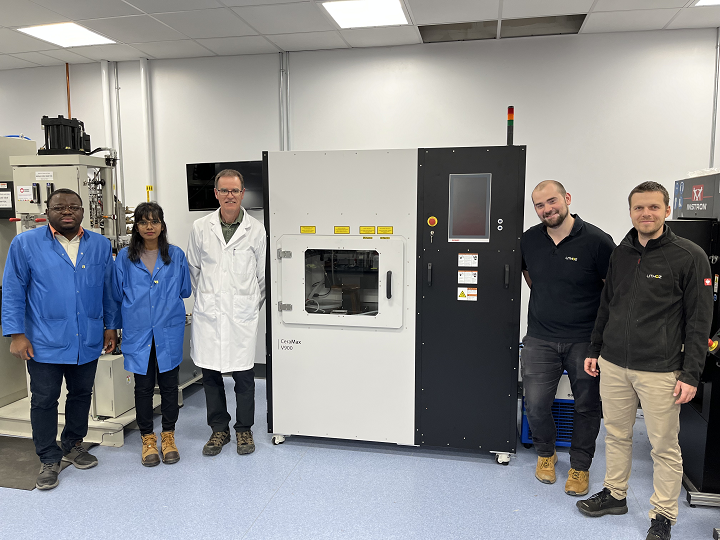In today’s 3D Printing News Briefs, we’ll start with business news from CNPC POWDER, and then move on to software stories from AMSIS and HYBRID Software. Then it’s on to light engine news from IN-VISION and Lithoz 3D printer deliveries to a university in Canada. Finally, we’ll end with robotic 3D printing of wool. Read on for all the details!
CNPC POWDER Announced $13.6 Million in Series A Financing
Metal powder research and production leader CNPC POWDER, headquartered in Vancouver, announced that it’s secured almost $13.6 million in a Series A financing round, led by Shunwei Capital with participation from Dunhong Asset, as well as long-term exclusive financial advisory and strategic support from Jupiter Capital. These funds will be used to help the company recruit top talent and advance technical R&D efforts, among other initiatives. Additionally, the company is ready to add over forty production lines to its China-based factory, which currently boasts an annual output of over 3,500 tons, so the financing will help speed up this expansion as well.
Since CNPC POWDER established its AM Campus in 2017, the company—on a mission to advance the industrialization of additive manufacturing and development of advanced components—has been solely dedicated to research and production of metal powders for advanced manufacturing applications. Its products are in more than 40 countries, mainly within the metal AM sector, along with injection molding, powder metallurgy, and others. The company continues to refine its manufacturing processes in order to provide its customers with high-quality but cost-effective metal AM powders, tailored to the requirements of different application industries.
AMSIS Presented Genesis 4 Software at Formnext 2023

Fast thermal simulation for the automatic detection of overheated zones of an impeller (100 x 100 x 13mm) made of Ti64. Simulation duration: approx. 90 seconds. The green to red color gradient represents the criticality level for overheating. Red areas represent an increased risk of overheating. Image: AMSIS GmbH, Bremen (GER)
At last month’s Formnext event, AM software startup AMSIS presented the latest generation of its Genesis build job preparation and simulation software. The company says Genesis 4—a combination of a classic pre-processor with simulation-based laser beam exposure—will improve the cost-effectiveness of laser powder bed fusion 3D printing processes, as it helps to significantly reduce support structures, even on parts with overhangs of 45° down to 20°. The standalone software is modular, and comes in both Classic (basic) and Innovative (advanced) versions. Genesis 4 supports end users throughout the build job preparation process chain, from importing STL data and nesting parts to generating support structures, slicing, and exporting the job. It has automated simulation-based functionalities, such as automatic identification of overheated zones, automatic energy input reduction if a part is overheating, as well as optimized thermal management, continuous parameter adaptation, and much more.
“Genesis 4 was designed to increase the deployment potential of existing AM systems for support-minimizing technology,” explained Prof. Dr.-Ing. Vasily Ploshikhin, Managing Director, AMSIS. “The user not only gets a very capable tool for build-job preparation, but also the opportunity to reduce build time and post-processing costs by significantly reducing material support structures.”
HYBRID Software Launched CLOUDFLOW Maker at Formnext 2023

Kris Binon, AM Business Unit development manager, celebrates with the CLOUDFLOW Maker software development team the launch of the new workflow solution in the Gent headquarters.
Global enterprise software development company HYBRID Software also launched a new solution at Formnext—CLOUDFLOW Maker, for industrial-scale binder and material jetting AM applications. The company’s parent organization, HYBRID Software Group, is the world’s top provider of binder jet printhead electronics through Meteor Inkjet, and combining this hardware with CLOUDFLOW Maker should just about guarantee a secure, direct data stream from CAD all the way to the printhead. The solution offers printer producers and end users an excellent tool to prepare and execute prints, and it’s a truly industrial system, built on OPC-UA standards to ensure interaction with all connected machines and devices. Plus, because it’s fully API-based, connections are smooth. But, HYBRID Software’s AM Business Unit development manager Kris Binon says that real world connectivity isn’t the only reason you should come to HYBRID Software for your jetting software needs.
“Having decades of experience in jetting the right drop on the right spot is just one thing; industrial printing software is about the ability to provide fast, secure and modular solutions, as well as customer-oriented support, maintenance and upgrades,” stated Binon.
IN-VISION Introduced New PANDIA Light Engine at Formnext 2023
Continuing with more Formnext news, Austrian optics specialist IN-VISION Technologies AG announced the launch of PANDIA, its new ultra-precise structured light engine for dynamic exposure with multiple wavelengths. Developed for PCB-lithography, advanced packaging, and advanced additive manufacturing, the high-performance PANDIA system is available immediately, and offers 2K native resolution, though it’s upgradable to the latest 4K Chipset from Design House partner Texas Instruments (TI). Some of the main features of PANDIA include scrolling availability for larger building areas; an open system with unlimited customization options; a water-cooled system for the highest level of optical power; a telecentric lens with 10um pixel size; onboard user-interface; high-speed data interface; the ability to easily swap out two LED modules without further calibration, and more.
“PANDIA opens up unparalleled adaptability to the needs of the industry, the system redefines the boundaries of DLP technology in Additive Manufacturing and lithography,” said Florian Zangerl, IN-VISION CEO.
Lithoz Delivered First North American CeraMax V900 and CeraFab 2M30
Ceramic 3D printer leader Lithoz GmbH recently delivered and installed two of its 3D printers at Dalhousie University in Nova Scotia, which are the first systems of their kind in North America. First, the CeraMax Vario V900 uses innovative Laser-Induced Slipcasting (LIS) technology, which was designed to engineer large, fully dense, thick-walled parts, and also enables the processing of “dark ceramics” like silicon carbide. These are typically very challenging materials to work with, and Dalhousie has confirmed that LIS is the first AM technology that can achieve the necessary high resolutions for easier processing. The university will use this system to further develop its R&D projects with these dark ceramics. Additionally, the CeraFab Multi 2M30 can combine ceramic and metal materials in a single layer and component, so Dalhousie researchers will investigate incorporating electrical circuitry into ceramic components.
“With the installation of two new Lithoz printers at our facilities, we are seeing the beginnings of a real 3D printing hotbed at Dalhousie,” said Kevin Plucknett, Professor and I.W. Killam Memorial Research Chair at Dalhousie University. “By offering such state-of-the-art technology, researchers from across North America now have the chance to get in contact and work with Dalhousie using the technology that can really achieve their goals, while the active support and trainings provided by Lithoz as a partner will help us make the most of this process. We look forward to seeing how our 3D printing facilities can drive innovation throughout North America!”
Christien Meindertsma’s Robotic Wool 3D Printing
Dutch designer Christien Meindertsma developed a collaborative robot, or cobot, that works like a 3D printer to build up layers of wool, using a form of felting to produce three-dimensional woven volumes that are “strong and soft at the same time.” Robotics company TFT helped with the creation of the Flocks Wobot, which is a custom robot arm attached to a cobot. It was one of two wool research projects she presented at Dutch Design Week—the other consisting of turning wool into soft blocks that can be cut into shapes—and both methods are showcased in her solo show, Christien Meindertsma: Re-forming Waste, currently at the Victoria and Albert (V&A) Museum in London as the third installment in its decade-long Make Good: Rethinking Material Futures program. Meindertsma believes her technique has several potential applications in design, such as acoustic products and furniture. Her Flocks Wobot attachment works with different kinds of wool, but she says it’s most effective with coarse varieties, like the durable kind that European sheep have, which is not fine enough for everyday textiles and often treated as a waste product.
“It’s a technique you can use with any European wool. The wool doesn’t have to be particularly fine and it doesn’t even need to be processed, just washed,” she explained.
“I realised it shouldn’t be exactly like a 3D printer, because 3D-printed filament breaks with certain movements. But with strands of wool, you can do different things.”
Subscribe to Our Email Newsletter
Stay up-to-date on all the latest news from the 3D printing industry and receive information and offers from third party vendors.
You May Also Like
Gorilla Sports GE’s First 3D Printed Titanium Cast
How do you help a gorilla with a broken arm? Sounds like the start of a bad joke a zookeeper might tell, but it’s an actual dilemma recently faced by...
Nylon 3D Printed Parts Made More Functional with Coatings & Colors
Parts 3D printed from polyamide (PA, Nylon) 12 using powder bed fusion (PBF) are a mainstay in the additive manufacturing (AM) industry. While post-finishing processes have improved the porosity of...
$25M to Back Sintavia’s Largest Expansion of Metal 3D Printing Capacity Since 2019
Sintavia, the digital manufacturing company specializing in mission-critical parts for strategic sectors, announced a $25 million investment to increase its production capacity, the largest expansion to its operations since 2019....
Velo3D Initiates Public Offering in a Bid to Strengthen Financial Foundations and Drive Future Growth
Velo3D (NYSE: VLD) has been among a number of publicly traded 3D printing firms that have attempted to weather the current macroeconomic climate. After posting a challenging financial report for 2023,...



































